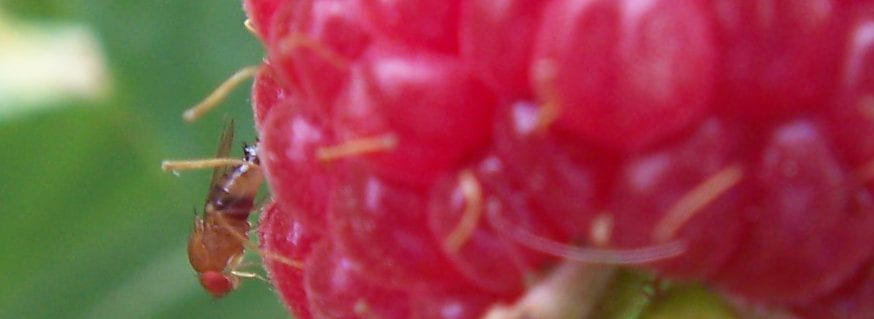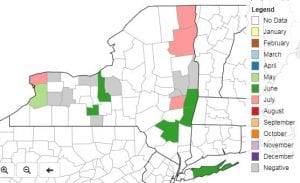Four SWD were caught in four traps set in summer raspberries during the week ending July 5, 2018. One trap set in the crop caught 1 male and 1 female; the other trap had zero SWD. Each of the two traps set on the edge of the planting had 1 male. These traps are being monitored by Natasha Field, technician with Laura McDermott, Eastern NY Commercial Fruit Program.
This planting has had ripe fruit for a week now and will be at high risk of infestation by SWD. Insecticide protection will be necessary. Review management tactics and insecticides. As fruits ripen and harvest gets underway, insecticide protection will become necessary.
- SWD Management
- SWD insecticides for berries
- SWD insecticides for tree fruit and grapes
- SWD distribution

Only 10 of 23 counties in the trap network haven't caught SWD to date. Data from three (Dutchess, Herkimer, Orange) of these 10 counties hasn't been reported to the SWD distribution map, yet.
Late-season blueberries, fall raspberries, blackberries, elderberries, and late harvested cherries, both sweet and tart, will be at high risk of infestation as SWD populations increase as the summer progresses.





